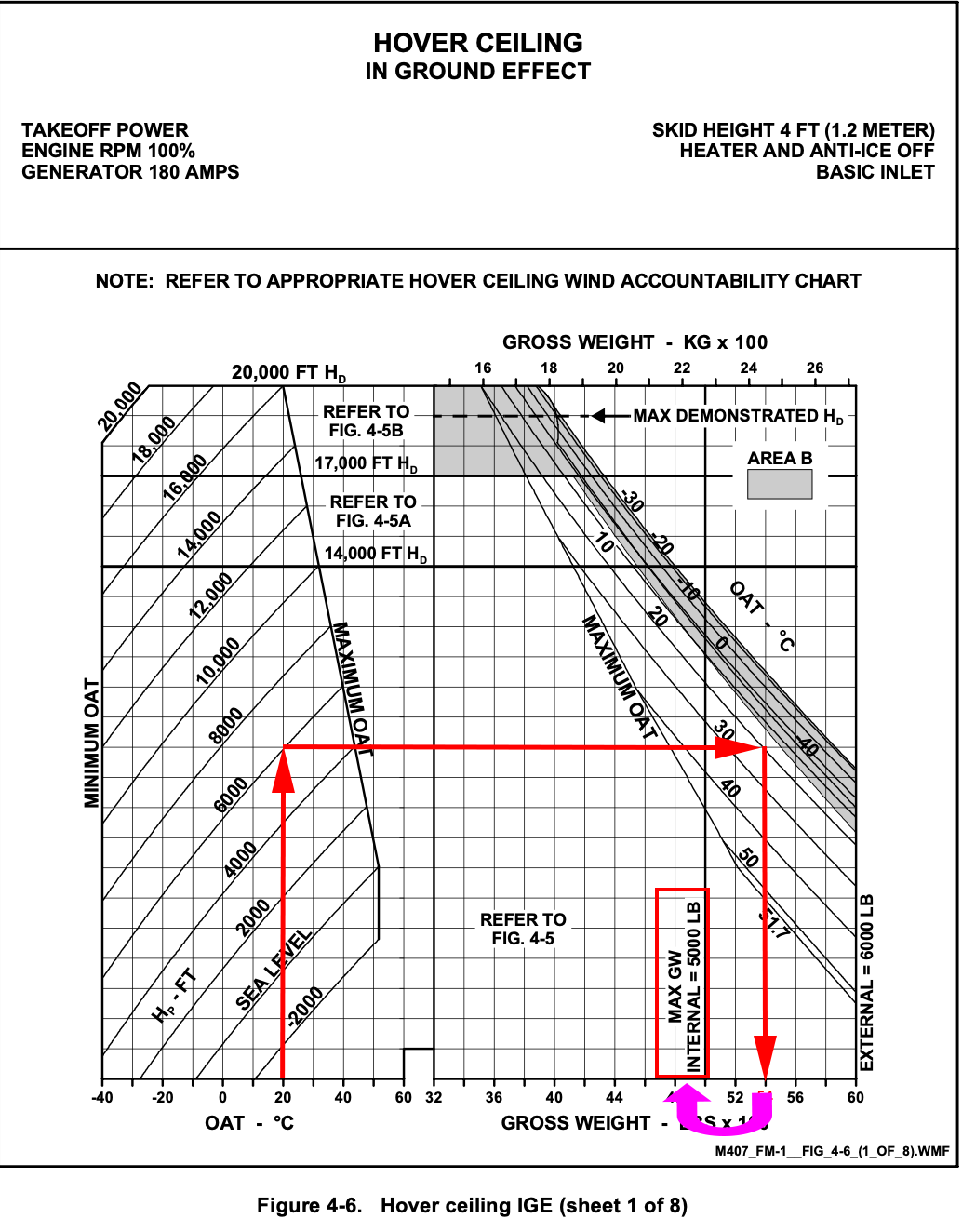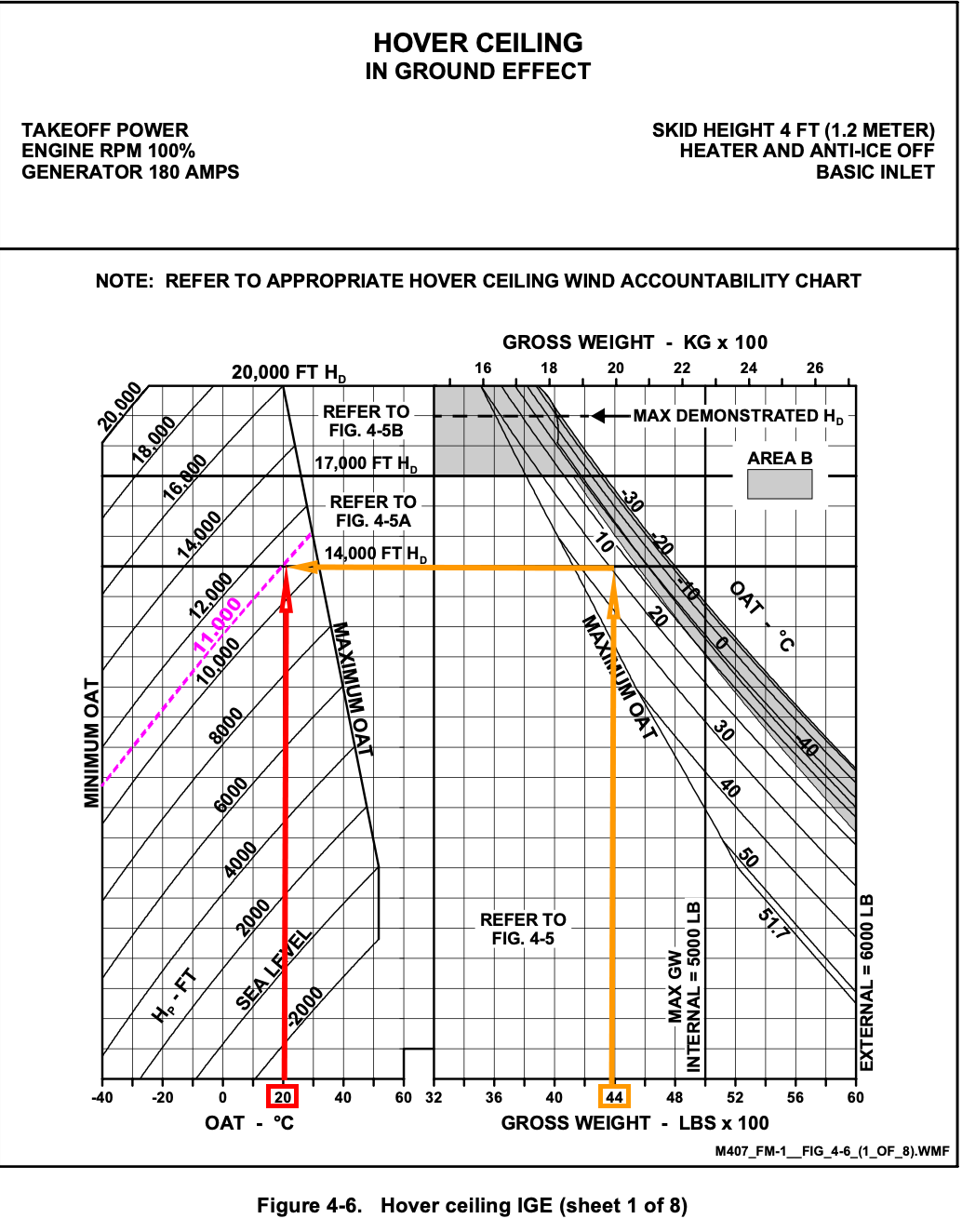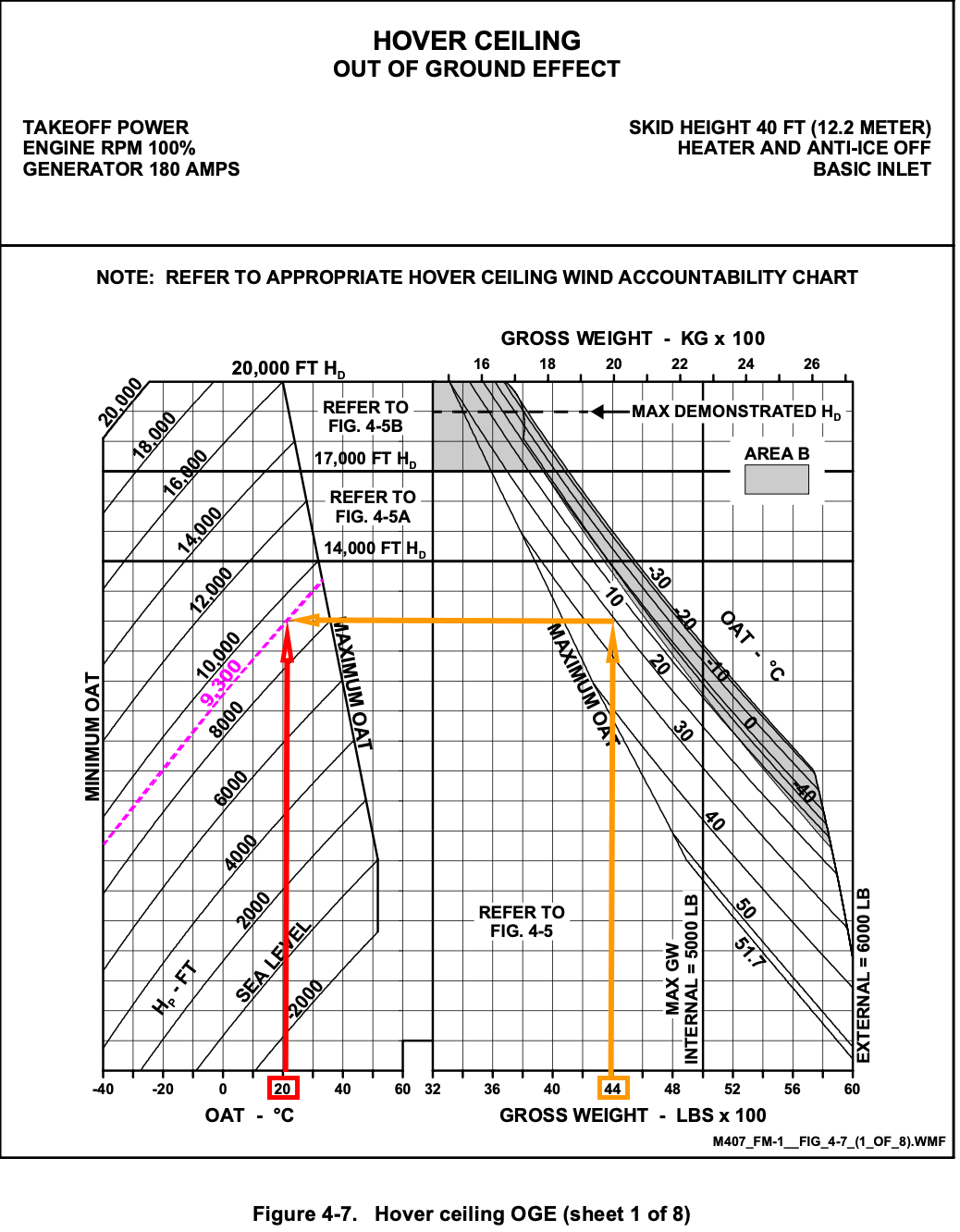¶ Introduction
Hover is the key element of helicopter performance calculations.
If a helicopter has enough power to hover, it can safely take-off with the benefit of additional lift provided by forward speed provided that take-off path is unobstructed.
Without exceeding hover power setting, a helicopter can also safely return to and land at the departure field using the appropriate technique.
If conditions (pressure altitude, air temperature, weight) at the destination field are not worse than at the departure field, a pilot can conclude that a safe landing can also be performed.
¶ Hovering in and out of Ground Effect
Helicopter hover performance calculations can be divided in to two catagories:
- Hover IGE (In Ground Effect)
- Hover OGE (Out of Ground Effect)
Due to extra lift provided by ground effect, power required for hovering in ground effect is less than power required out of ground effect.
We have to calculate our Hover OGE performance to determine whether our helicopter can hover out of ground effect.
As a rule of thumb, a height more than 1 and 1/4 of the rotor diameter is accepted as out of ground effect.
In some situations like:
- Sling rope operations,
- Night flying,
- Conditions at destination are not known,
Hover OGE capability is considered as a requirement.
¶ Sample Hovering Problem 1
¶ Conditions and Objectives
Helicopter: Bell 407
- Take off Power: 100%
- Pressure Altitude: 6000 feet
- OAT: +20 C
- Wind calm
- Heater and Anti-ice off
Objectives:
- Find Maximum Gross Weight for IGE Hover.
- Find Maximum Gross Weight for OGE Hover.
¶ Maximum Gross Weight for IGE Hover
Go to the table of Hover Ceiling IGE.

- Enter the OAT scale at +20 °C.
- Move upward to the 6000 feet HP curve.
- Move horizontally to the +20 °C curve.
- Drop down to read the maximum external gross weight of 5400 pounds
- Find maximum gross weight for IGE Hover 5000 pounds(Due to structural limitations).
¶ Maximum Gross Weight for OGE Hover
Go to the table of Hover Ceiling OGE.

- Enter the OAT scale at +30 °C.
- Move upward to the 6000 feet HP curve.
- Move horizontally to the +30 °C curve.
- Drop down to read maximum external gross weight of 4700 pounds.
¶ Sample Hovering Problem 2
¶ Conditions and Objectives
Helicopter: Bell 407
- Take off Power: 100%
- Gross Weight: 4400 pounds
- OAT: +20 C
- Wind calm
- Heater and Anti-ice off
Objectives:
- Find Maximum Altitude for IGE hover.
- Find Maximum Altitude for OGE hover.
¶ Maximum Altitude for IGE Hover
Go to the table of Hover Ceiling IGE.

- Enter the OAT scale at +20 °C.
- Move upward to the end of the table.
- Enter the GW scale at 4400 pounds.
- Move horizontally to the end of the table.
- Mark the intersection of vertical and horizontal lines
- Interpolate between the 12000 HP and 10000 HP curves and read the maximum altitude for IGE hover as 11000 HP.
¶ Maximum Altitude for OGE Hover
Go to the table of Hover Ceiling OGE.

- Enter the OAT scale at +20 °C.
- Move upward to the end of the table.
- Enter the GW scale at 4400 pounds.
- Move horizontally to the end of the table.
- Mark the intersection of vertical and horizontal lines
- Interpolate between the 10000 HP and 8000 HP curves and read the maximum altitude for IGE hover as 9300 HP.
- None
- VID 522050 - Creation
- VID 496402 - Wiki.js integration